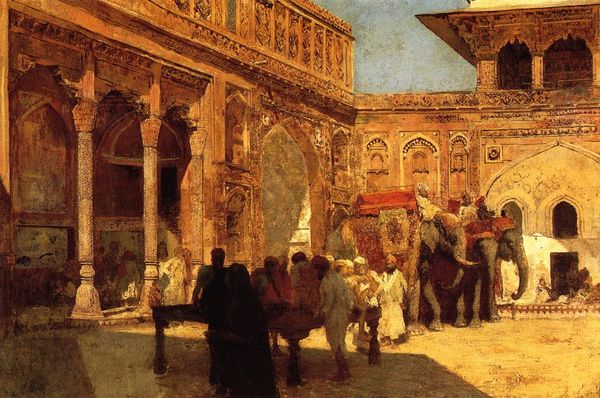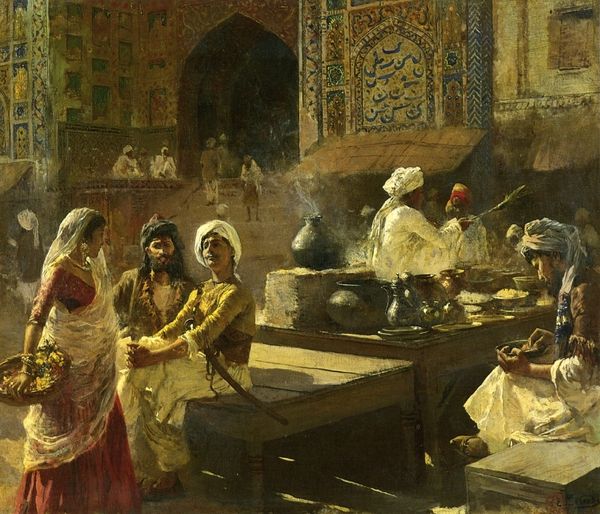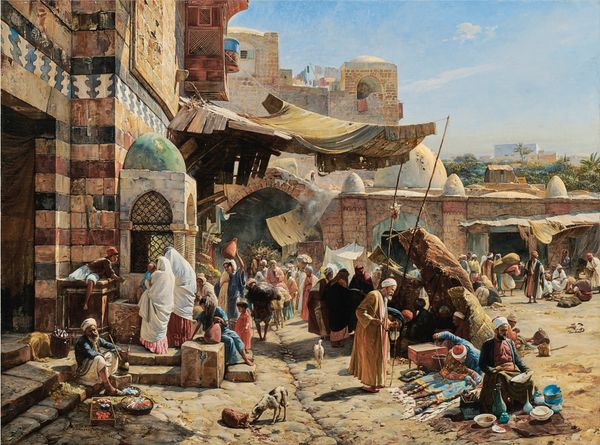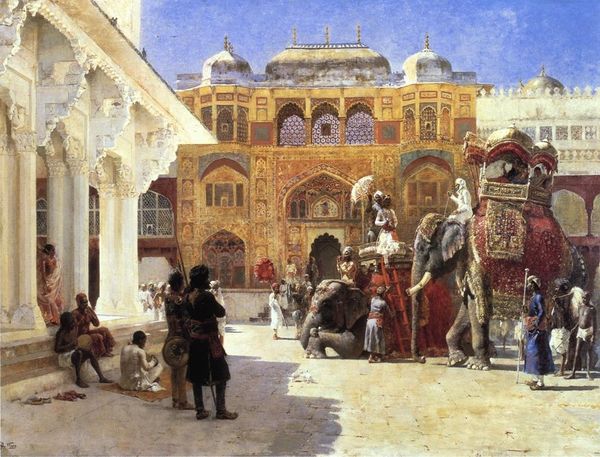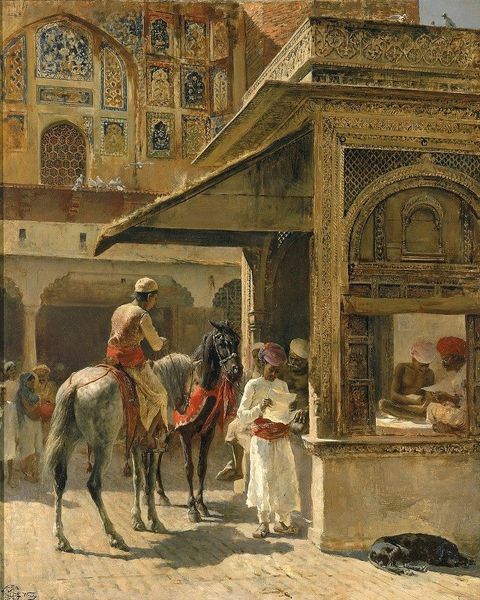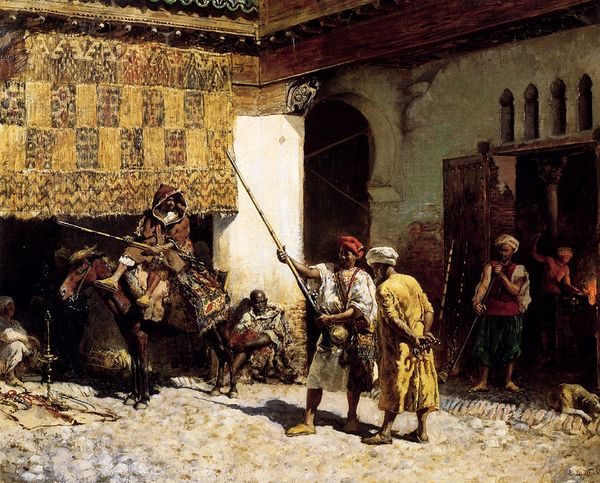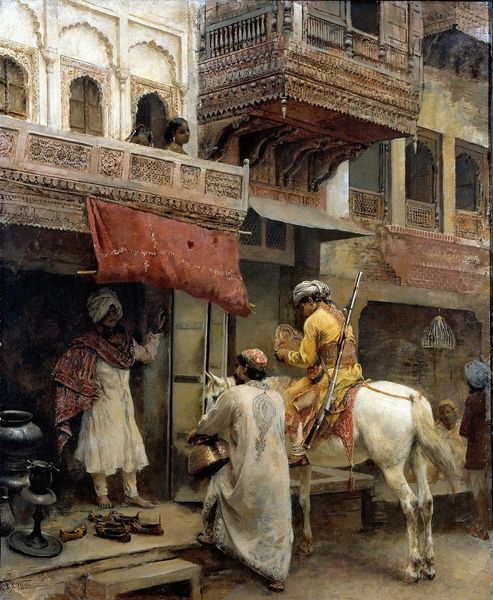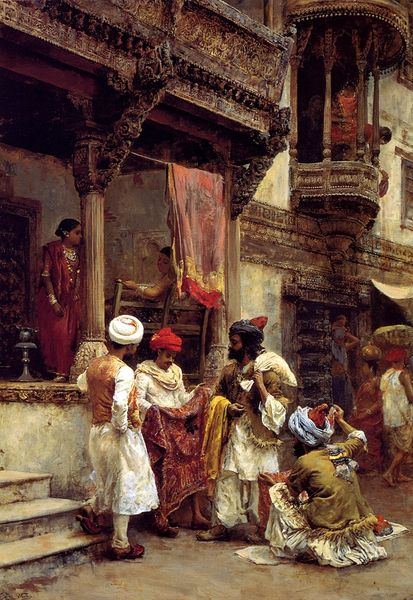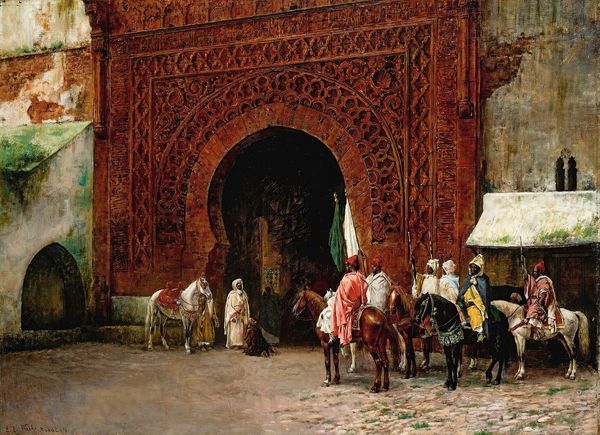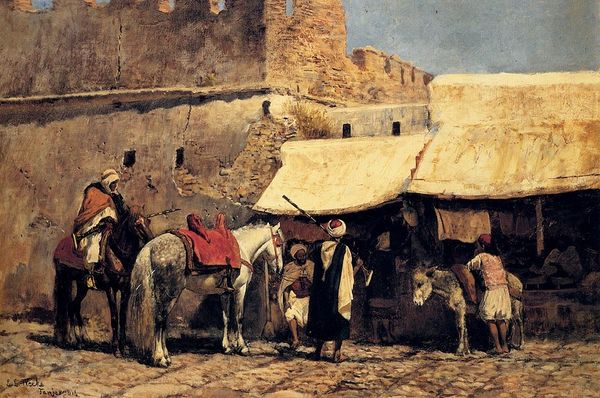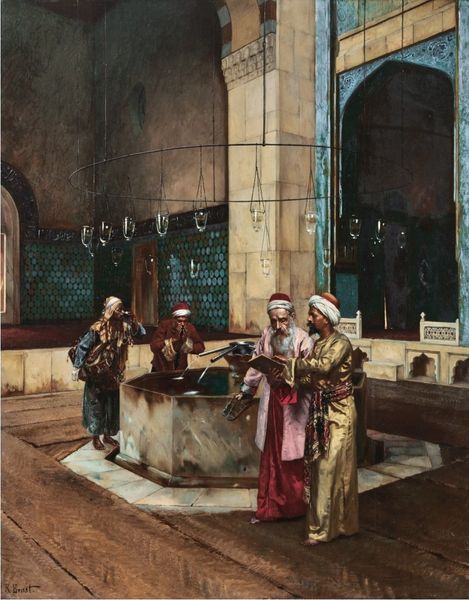
oil-paint
#
portrait
#
gouache
#
oil-paint
#
landscape
#
oil painting
#
orientalism
#
cityscape
#
islamic-art
#
genre-painting
#
realism
Copyright: Public domain
Curator: The work before us is titled "An Open-air Restaurant Lahore" by Rudolf Ernst. The piece, executed with oil paints, captures a vivid scene. Editor: It feels instantly transportive. The light seems to bake off the canvas, and that archway in the background has an incredible, almost dizzying complexity of geometric patterns. It’s simultaneously beautiful and slightly overwhelming. Curator: Ernst, a painter known for his Orientalist works, frequently depicted scenes from North Africa and the Middle East, often romanticizing the region. The genre scene of everyday life, visible here, held significant appeal for European audiences eager to imagine life in distant lands. Editor: That arch, with its layers of geometric patterns, screams Islamic symbolism, specifically the idea of infinite expansion of divine unity. It makes you think about paradise, and perhaps contrasts the bustling, earthly activity with that sense of the infinite. Curator: It's crucial to recognize the political undercurrents present within Orientalist paintings. Ernst's portrayal, while appearing documentary, caters to a European audience hungry for an "authentic" East. What is "authentic," though, becomes the question when filtered through a Western artistic lens. The city, Lahore, serves less as a real place, but more as a stage. Editor: Perhaps, but consider the human element. Note how the vendor ladling food establishes a visual anchor with his gesture of service, a recurring emblem across many cultures denoting hospitality and welcome. Doesn't it temper your reading? Curator: Certainly, we should acknowledge his technical skill and compositional decisions. However, let’s not forget the broader social and historical impact. These images contribute to constructing a skewed perception of the East and they've shaped policy. Editor: True, there is a potent blend of fantasy and documentation in Ernst's creation, leading to complicated interpretation that transcends any single intention. The power lies in symbols which can become unrooted from original cultural touchstones. Curator: The painting certainly leaves us with much to consider about the intertwined dynamics of culture, representation, and reception. Editor: Agreed, art, such as Ernst's work, serves as both a looking glass and a prism reflecting both realities and perceptions.
Comments
No comments
Be the first to comment and join the conversation on the ultimate creative platform.
